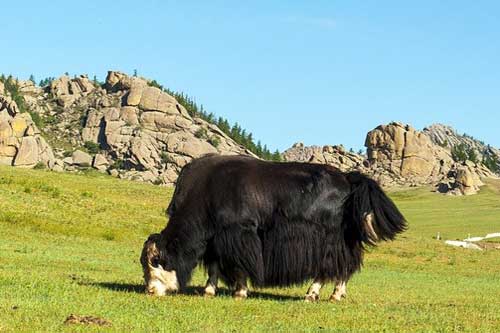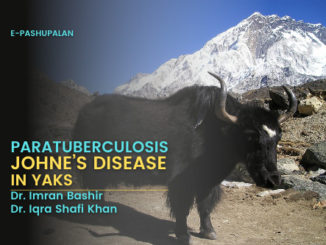India is a land of diverse cultures with varying topographic and climatic regions. Such dynamic environments have enabled the animal rearing communities living in different areas to rear specific animal species which adapt well according to the climatic conditions that prevail and are also known to thrive well. From camels in the western deserts of Rajasthan to mithun in north-eastern hilly areas, these are some of commonly reared livestock animals apart from conventional ones like cattle, buffalo, sheep, goat, pig, poultry etc.
Himalayan regions of India, Tibetan plateau and some parts of northeast India are home to the majestic yak. Also known as “grunting ox” domestic yak (Bos grunniens) acts as a lifeline in hilly regions and is an important source of food, clothing, transportation and livelihood for the communities living in these challenging lands.

Although yaks have been reared since time immemorial by the indigenous tribal communities, their rearing on a large scale setup for the purpose of income and employment generation is not yet explored by many. The government of India recently declared the regions of Ladakh and J&K as Union territories. This move opens a lot of doors for the youth living here to take up yak farming as an entrepreneurship venture and further contribute to development and prosperity of this region. Some of the areas that can be explored and emulated further connected with yak rearing include:
- Yak milk processing plants: Yak milk is rich and highly nutritious with higher fat and sugar content. It can also be used to prepare cheese, hard or soft candies, milk powder, whey etc. Yak butter produced by processing raw milk is rich source of fat and protein and is widely consumed in colder regions. Its unique texture and higher fat content has been greatly praised worldwide. Yak butter tea is a high calorie salted drink which is consumed in cold climate and known for its unique flavour and has also gained popularity among tourists.
- Green manure plants: Organic farming has recently taken up pace in urban centres and compost is an indispensable part of this farming system. Yak dung is traditionally used as fuel but due to growing environmental concerns this practice has been discouraged by many as it is known to contribute towards air pollution. As an alternative to this practice and safe disposal of wastes generated due to large scale rearing of yaks mixing of manure prepared using dung with bedding material and straw to form compost is a better choice. Further the compost can be used in organic farming sites and nearby farms.
- Export oriented meat processing plants: Yak meat is widely in demand in Western regions due to its juiciness and lean nature as compared to beef. It can also be exported in the form of “jerky” which is a preserved form of meat and eaten as a delicacy. The inedible parts can be further processed to prepare products like casings, dog chew, bone meal etc.
- Handicrafts and fibre processing plants: Coarse yak hair which is shed can be used to develop unique handicrafts, ropes, tents strings and traditional items which can be developed in small cottage industries. This will also aid in the employment generation in the region. Recently soft yak down fibre shed naturally in spring season has gained popularity in foreign countries for its warmth and softness comparable to that of cashmere fibre and sustainability in its collection methods. Certain weaving techniques unique to the region and practiced mainly by women can help the handloom industry of the nation gain momentum.
- Breeding Farms and cryopreservation: Yaks from Himalayan regions are widely being introduced and reared in countries like USA and Canada. Good quality breeding lines and preserved semen samples are highly in demand for upgradation of existing flocks. Breeding of superior male species and cryopreservation of semen for export as well as indigenous genetic improvement programmes can be a great opportunity for yak breeders in the region.
There can be seen a paradigm shift in animal rearing practices as traditional methods are being modified and diversified for better results. With the growing development in the processing sector as well as research in livestock population of India, yak farming has some major core areas which can be further enhanced by the knowledge and experience of the indigenous yak rearing communities. Setting up of new firms and export units will also lead to infrastructural developments in the region. Promoting and preserving the cultural heritage in the form of traditional costumes, food habits, and handicrafts connected with yak rearing is also a factor that needs to be looked upon. Thus it can be concluded that yak rearing in the form of self driven ventures not only widens the horizons earlier known to us but can also be a potential source of holistic development of the individual, community, and the nation.






1 Trackback / Pingback